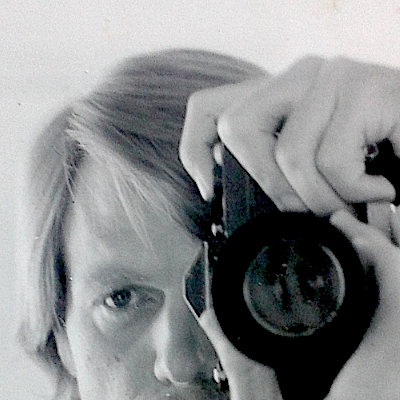In Florida last week, Trump debuted a "loyalty pledge" that looks and sounds an awful lot like a National Socialist ritual. And at rallies across the nation, his crowds and security guards have violently attacked black protesters.
As Sunshine State Republicans prepare to make Trump their choice for president in Tuesday's primary, it's important to remember this isn't the first time racial oppression has shown its face in our neighborhood.
Miamians like to think of themselves as a separate world from the Deep South, but the fact is Dade County has its own long and hideous history of discrimination — particularly in Miami Beach, where wealthy elites could enforce their biased whims.
The city also has a fascinating backstory of how music and nightlife helped push segregation to a relatively peaceful end in the Magic City.
Anti-Semitism
Miami Beach has long since become synonymous with its Jewish residents, but for
Carl Fisher — considered the "Father of Miami Beach" — refused to sell property to Jews as he turned the swampy stretch of mangroves into a beach resort. “There were deed restrictions on the property north of Fifth Street,” Marcia Jo Zerivitz, director of the Jewish Museum of Florida, once told Miami411. “Carl Fisher had in his deeds that he would not sell to Jews. All the Jews were forced to live south of Fifth Street.”
Even by the 1930s, advertisements for some of Miami Beach's oceanfront hotels boasted, "Always a view, never a Jew."
It wasn't until 1947 that Miami Beach passed a law prohibiting property owners from displaying signs that used the words "restricted" or "gentiles only."
By the 1980s, when government-sanctioned racial segregation in South Florida was a thing of the past, Jews were still feeling the sting of anti-Semitism. In a three-part series in 1985, the Miami Herald reported that some of Miami Beach's most exclusive clubs still routinely excluded Jews and minorities.
The Herald's Marc Fisher wrote that when one member of the Beach's ritzy Bath Club circulated a petition calling for an end to the club's longstanding discriminatory policies, he began receiving unsigned hate mail at his home.
"Why don't you go down to South Beach and join a club there?" someone wrote.
Segregation
In Miami Beach's earliest days, the only blacks allowed there were those employed as hotels maids or servants for wealthy whites. It wasn't long before the city codified that rule into law.
In 1936, Miami Beach enacted Ordinance 457, which required more than 5,000 seasonal workers at hotels, restaurants, and nightclubs, as well as domestic servants, to register with police and to be photographed and fingerprinted. Once registered, those workers — many of whom were black — had to carry ID cards at all times in the city.
Decades after the law was passed, Miami Beach Police would sometimes conduct spot checks to make sure workers were in compliance. Jet magazine reported in February 1952 that Miami Beach Police pulled over buses carrying "peaceful Negro commuters" and arrested 17 people for not complying with the law.
Jim Crow laws were in full effect across Dade County, meanwhile. And the bigotry embedded in those rules often bubbled to the surface in absurd ways.
In May 1953, for instance, more than 150 black church pastors and their wives who had booked rooms at the Betsy Ross Hotel on Ocean Drive
But according to a Jet report, Betsy Ross manager George Rone told the delegates that if any of them were unable to find rooms in Miami, "the hotel will be opened to them. I don't care what threats are made — I'll abide by my agreement."
Two years later, in May 1955, Miami Beach cops arrested Lillian
"I'm not ashamed of this," Uricho told Jet about the the arrest. "People should be allowed to live their own lives and not be persecuted because they are not the same color."
The Beach cops periodically swooped in for such interracial arrests. February 23, 1962, they showed up at a tiny efficiency apartment at 732 Second Street i
Dewey McLaughlin, who was black, and Connie Hoffman, who was white, were taken to the police station around the corner and charged with violating a Florida statute that barred "unmarried interracial couples from habitually living in and occupying the same room in the night-time."
McLaughlin and Hoffman were tried, convicted, and sentenced to 30 days in jail and a $150 fine. They appealed their conviction all the way to the U.S. Supreme Court, and December 7, 1964, in a unanimous decision, the Court ruled the Florida law unconstitutional.
Nightlife's Role in Ending Segregation
Few other cities eroded segregation's diseased hold through nightlife and entertainment quite like Miami. By the early 1950s, Miami Beach nightclub owners began to slowly chip away at the color barrier by booking big-name African-American entertainers.
In 1951, Ned Schuyler, the general manager of Copa City, a Beach nightclub on Dade Boulevard, booked legendary singer Josephine Baker to perform at his club. But Baker told Schuyler she would perform only before an audience that was integrated. Schuyler agreed, and Baker filled Copa City's 750 seats every night.
In 1952, sultry torch singer Joyce Bryant — known for her slinky, skintight gowns — was signed to perform at the swank new Algiers Hotel at Collins Avenue and 26th Street, becoming the first African-American singer to be scheduled at a major Miami Beach hotel.
The November 13,
In another issue, Jet reported that Bryant "will live in the best hotel there." At the
In December 1953, the Birdland jazz nightclub opened at 22nd Street and Park Avenue.
"Florida's Color Bars Tumble as Jazz Invades Miami Beach," Jet headlined its story. "When Birdland opened its canopied doors on ultra-swank Miami Beach, Jim Crow went out the back door. Negro and white jazz fans sat side by side in mixed groups for the first time in Florida's history. The club admits all patrons, without color restriction."
That's not to say the efforts made immediate change. A little more than a year after Birdland opened and three years after Bryant was booked at the Algiers — in March 1955 — singer Lena Horne made national headlines when she pulled out of an $8,000-a-week engagement at Miami Beach's Copa City nightclub because a Miami Beach hotel refused to honor her reservation.
Change Comes Quietly to Miami
By the early '60s, as the civil rights movement was gaining momentum throughout the Deep South, Miami was ushering in change — but largely without the images of fire hoses, police dogs, and mass arrests so common elsewhere in the region.
In August 1960, a little more than four years after Rosa Parks refused to surrender her seat on a Montgomery, Alabama bus, the Associated Press moved this item on its national news wires:
MIAMI BEACH (AP)—A negro family of six, which swam unmolested at a public beach for the second day in a row yesterday, may have opened the way for integrated beaches at Miami Beach.Around the same time that black family was swimming "unmolested" at the beach, Flagler Street's five-and-dime lunch counters in downtown Miami were being integrated without much fanfare.
"Our policy is to let them be," commented a police official.
C. E. Graves, attorney for the Miami Chapter of the [NAACP], remarked: "No interference shows a degree of tolerance in Miami Beach."
In 1961, Miami Beach was chosen as the site for a boxing match pitting Sweden's Ingemar Johansson against Floyd Patterson. It would be the third ring meeting in two years for the heavyweights.
But win or lose against Johansson, in the weeks leading up to the fight, Patterson made it clear he wanted to strike a blow against another foe: "Southern segregation," according to a Jet story.
"Can Patterson Beat Jim Crow in Miami Beach?" the magazine's headline asked.
In an unprecedented move, the fight's promoters promised to donate $10,000 to the NAACP if Patterson found that black and white fight fans had been segregated on fight night.
But a Jet reporter
By the early '70s, the local entertainment biz began to truly reflect the changes in South Florida. It was December 1971 — only ten years after McLaughlin and Hoffman were arrested for interracial dating — when Damita Jo Nicholson, an 18-year-old African-American college student, was selected as Miss Miami Beach.
A news photo shows a smiling Nicholson being congratulated by Miami Beach Mayor Chuck Hall.











